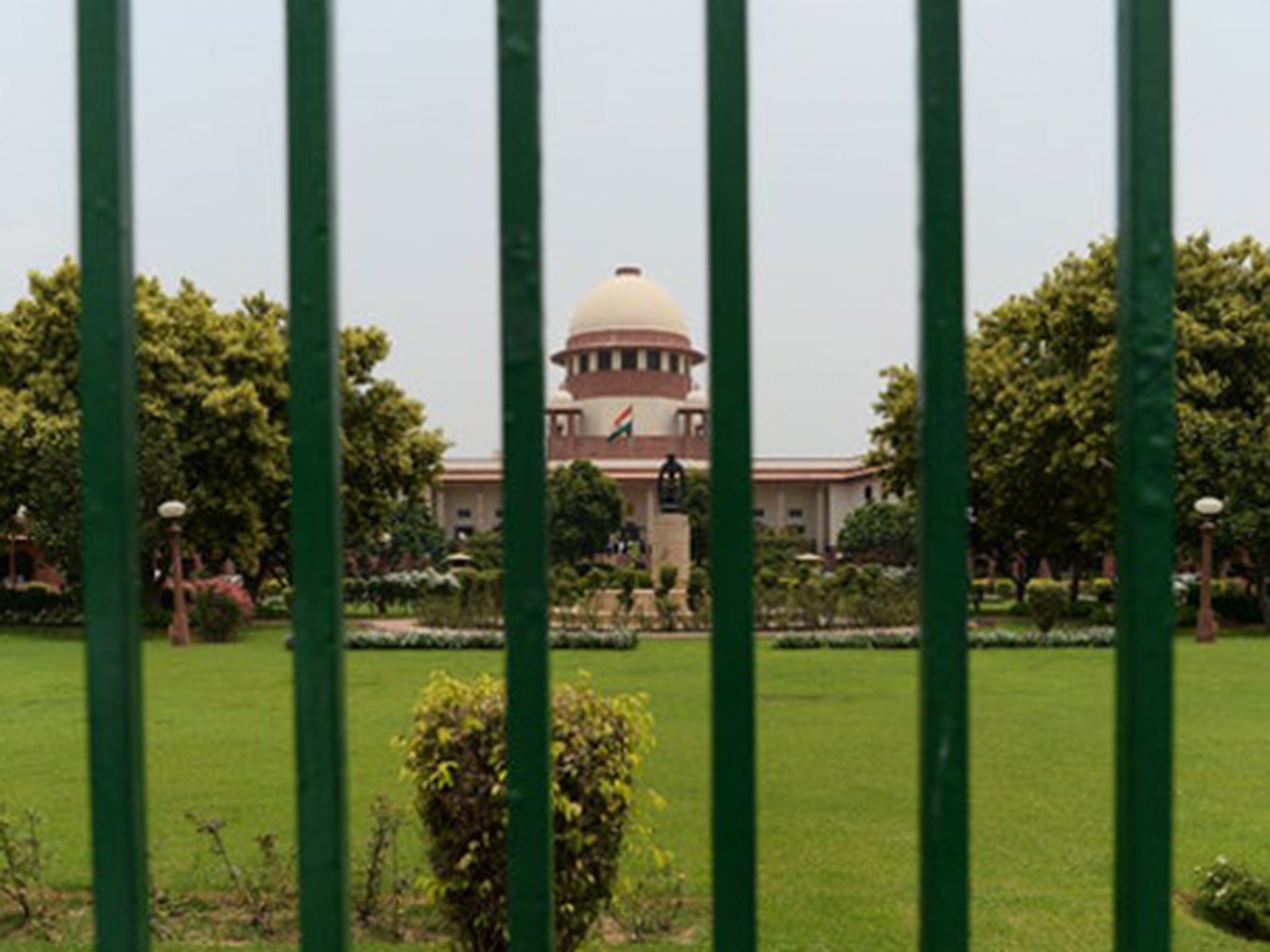‘A weapon to attack anyone’: Modi’s government exploits a colonial-era sedition law to stifle dissent
The government is using a controversial law to stifle dissent in India, but a legal showdown is underway to review its constitutional validity, writes Namita Singh in Delhi


“Sedition is a colonial law. It suppresses freedoms. It was used against Mahatma Gandhi, [Bal Gangadhar] Tilak... Is this law necessary after 75 years of independence?” asked the chief justice of the Supreme Court of India earlier in July, in what was deemed to be an unprecedented judicial criticism of the law.
“The use of sedition is like giving a saw to the carpenter to cut a piece of wood, and he uses it to cut the entire forest itself,” added chief justice NV Ramana.
He made these remarks as the court heard petitions seeking to challenge the constitutional validity of a colonial-era law, also known as section 124A of the Indian Penal Code.
The plea for a review comes at a time when India’s government, led by prime minister Narendra Modi’s right-wing Bharatiya Janata Party, has repeatedly been accused of using it against journalists, activists, students and farmers to quell dissent.
“A democracy is a democracy only as long as there is space for dissenting views,” Kanhaiya Lal Shukla, a journalist and one of the petitioners in the matter, tells The Independent. “This misuse propelled me to take up the matter because this government is using it like a weapon to attack anyone who does not toe their line and then use them as an example.”
For Shukla, the battle is also personal.
In April 2018, he was booked under the controversial law for sharing a cartoon on Facebook that was critical of the ruling BJP and the-then chief justice of the Supreme Court of India, in particular of the way the demand for a probe into the death of special judge Brijgopal Harkishan Loya was handled. At the time of Loya’s death, the judge had been hearing a case of alleged extrajudicial killing in which home minister Amit Shah – Mr Modi’s right-hand man – was one of the accused.
Shukla says that while several others shared the cartoon on Facebook, he was the only one targeted. This, he feels, was because he covered the tribal areas and reported against the government on issues surrounding the forest and land rights.
I stayed away from my house to evade arrest and incarceration. My children were bullied at school and had to stop going. The teachers and students made it difficult for them to even step out of the house
“The main issue they had with me was that I reported on the struggles of the tribals. So they used the cartoon I shared as an excuse to book me under the charges of sedition.”
In the days that followed, says Mr Shukla, “I stayed away from my house to evade arrest and incarceration. My children were bullied at school and had to stop going. The teachers and students made it difficult for them to even step out of the house.
“If I had not escaped, I would have been behind bars for at least two to three years,” he adds. “I do not think I did anything wrong. And while previous governments have used this law, the cases under the Narendra Modi government have risen dramatically.”

His claims are not incorrect. Consider this:
- Siddique Kappan: A Kerala journalist who was on his way to report on the alleged gang-rape and murder of a girl in the north Indian state of Uttar Pradesh was arrested last October after being reportedly being found with material that was likely to “disturb peace and tranquillity in the state”. He was later booked under sedition as well the contentious Unlawful Activities Prevention Act and since then has remained in prison with his bail plea being repeatedly declined.
- Disha Ravi: A 22-year-old climate activist was booked under the sedition law in the wake of the farmers’ protest that turned violent on Republic Day. She was arrested for editing a “toolkit” document that contained resources on how to gather support for the farmers.
- Shashi Tharoor and six journalists: Parliamentarian Shashi Tharoor and six journalists were booked under section 124A after advocate Chiranjiv Kumar, who lodged the complaint against them in Delhi, accused them of spreading fake news about the death of Navreet Singh, a farmer who died on Republic Day during the rally in the national capital against new agricultural laws.
- Farmers in Haryana: State police invoked sedition charges against over a hundred unidentified people for allegedly attacking and damaging the official vehicle of Haryana’s deputy speaker during a demonstration against the new farming law brought by the BJP government. The police have since arrested five farmers, who were granted bail by the district court.
- Vinod Dua: A sedition case was registered against the journalist by a BJP member in May 2020 after he made critical comments regarding Mr Modi and the central government. The Supreme Court quashed the case against him in June.
These are not the only cases. According to an analysis by Indian news portal Article 14, 65 per cent of nearly 11,000 individuals booked in 816 sedition cases since 2010 were implicated after 2014, when Mr Modi came to power.
However, data shared by the Indian government in parliament reveals that, despite the high number of cases registered under this section, few lead to convictions. According to the government’s data, Between 2014 and 2019, 326 sedition cases were registered across the country, but only six were convicted.
“The law seeks to punish any expression of thoughts, opinions or ideas that are akin to inciting hatred or disloyalty to the government,” claims advocate Siddharth Seem, who argues that the sedition law was brought in to quell critical voices. “There are some laws which exist and are misused, but there are some laws which exist to be misused. The sedition law has no other purpose but to harass dissenters.
The law seeks to punish any expression of thoughts, opinions or ideas that are akin to inciting hatred or disloyalty to the government
“That was the original colonial intent, and that has remained the intent even after independence,” he says.
The sedition law was drafted in 1870 by Thomas Macaulay, the British politician who was considered to be the chief architect of the criminal code in India.
Under the law, “words, either spoken or written, or by signs, or by visible representation, or otherwise, brings or attempts to bring into hatred or contempt, or excites or attempts to excite disaffection towards the government” were seen as an offence for which a person can be awarded a maximum punishment of life imprisonment.
Sedition is a cognisable and non-bailable offence, and the law gives power to the police to arrest people without a warrant for statements that “may be construed as an expression of disaffection or disloyalty to the government in power”, senior advocate Vrinda Grover tells The Independent.
“The law seeks to punish any expression of thoughts, opinions or ideas that are akin to inciting hatred or disloyalty to the government,” she says. “There is no constitutional compulsion to have affection to one’s government.”
Advocate Seem says that the law does not explain what disaffection means. “There is no dividing line, which is made by the section itself, that this kind of language, action or thought is illegal. So, disaffection would attain a negative definition, which means anything that is not affectionate would be disaffection.”
And it is this ambiguity, he argues, that allows the law to be misused.
Though the law’s constitutional validity was challenged in 1962, the court limited its use, instead of striking down the law, making incitement to violence a necessary condition for invoking the law. But the misuse of the law continues unabated, argue rights lawyers.
“Even though the Supreme Court said that it would not be applicable unless there is violent action, all state government and central government have prosecuted several people for simply their statements,” explains Mr Seem.
“And those statements might not have resulted in a conviction, but people have still been put in jail for many months, sometimes years, and then finally, they are never convicted because they don’t meet the criteria for sedition.”
Join our commenting forum
Join thought-provoking conversations, follow other Independent readers and see their replies
Comments
Bookmark popover
Removed from bookmarks